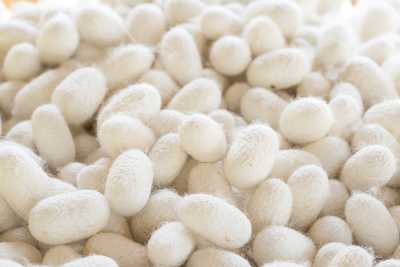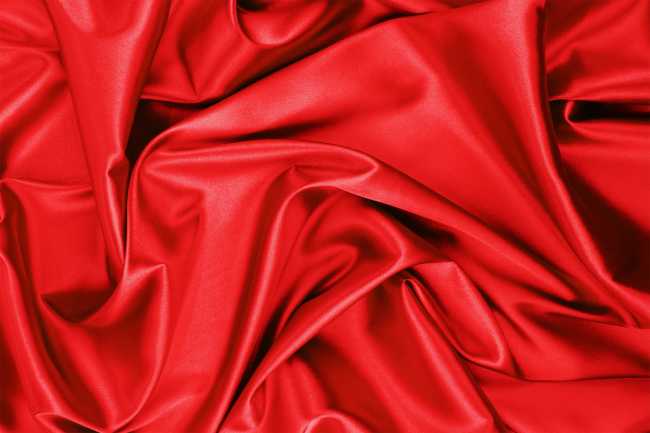When it comes to finding a silk alternative, cotton is often the first fabric that comes to mind. Cotton is a versatile fabric that can be used for a variety of garments, from formal wear to everyday casual wear. Poplin, twill, and linen are also popular choices for silk alternatives.
These fabrics are all durable and have a luxurious feel, making them ideal for those who want the look and feel of silk without the high price tag. Flannel is another great option for those who are looking for a more budget-friendly alternative to silk. Although it is not as smooth and shiny as silk, flannel has a soft and cozy feel that is perfect for fall and winter wear.
5 Great Alternatives to Silk
Silk has been long considered the gold standard of fabrics. It’s elegant, luxurious, and has a reputation for being gentle on skin. However, silk isn’t the only fabric out there that can offer these benefits. In fact, there are a number of different fabrics that make great alternatives to silk. Here are five of our favorites.
Linen – Linen is a fabric that is made from the fibers of the flax plant. It is known for being very strong and durable, as well as being gentle on skin. Linen is also a breathable fabric, making it a great choice for summer clothing.
Hemp – Hemp is another plant-based fabric that has a number of benefits. Like linen, it is strong and durable. It is also absorbent and has anti-bacterial properties. Hemp is also a sustainable fabric, as it requires little water to grow and can be harvested without the use of pesticides or herbicides.
Bamboo – Bamboo is another sustainable fabric option. It is soft and gentle on skin, making it a great choice for those with sensitive skin. Bamboo is also absorbent and has anti-bacterial properties like hemp.
Tencel – Tencel is a man-made fabric that is made from wood pulp. It shares many of the same properties as other natural fibers like linen and hemp, including being absorbent and gentle on skin. Tencel is also environmentally friendly, as it requires less water and energy to produce than other man-made fabrics like polyester.
Soy – Soy is a protein that can be spun into a yarn and used to create fabric. Soyfabric has a number of benefits, including being absorbent, anti-bacterial, and environmentally friendly. Soyfabric is also biodegradable, making it a great choice for those looking for an eco-friendly fabric option.
Whether you’re looking for an alternative to silk for environmental or personal reasons, there are a number of great options available. Natural fibers like linen, hemp, and bamboo are all sustainable choices that are gentle on skin. For those looking for a man-made alternative, tencel or soyfabric are both eco-friendly options that have many of the same benefits as silk. So don’t be afraid to experiment with different fabrics — you might just find your new favorite!
A Comprehensive Guide to Cruelty-Free Alternatives to Silk
If you’re looking for a cruelty-free alternative to silk, you’re in luck! There are now a number of vegan silk alternatives on the market that are just as luxurious and beautiful as the real thing. Here are ten of our favorites:
SeaCell™ Lyocell Fiber: This fiber is made from cellulose, which is derived from wood pulp. It’s eco-friendly, sustainable, and hypoallergenic. SeaCell™ lyocell is also known for being extremely soft and strong.
Bamboo viscose: Bamboo viscose is another sustainable option that’s becoming increasingly popular. It’s made from the pulp of bamboo plants and is known for being both breathable and absorbent. Plus, it has a natural sheen that gives it a luxurious look and feel.
Modal: Modal is a semi-synthetic fiber that’s derived from beech trees. It’s environmentally friendly and resistant to shrinking and wrinkling. Modal is also extremely soft and absorbs moisture well.
Soy Silk: As the name suggests, soy silk is made from soybeans. It has a similar feel to silk but is more durable and less expensive. Soy silk is also naturally antibacterial, making it a great choice for those with sensitive skin.
Pineapple Leather: Pineapple leather is a relatively new vegan material that’s made from the fibers of pineapple leaves. It’s environmentally friendly, durable, and has a unique texture that sets it apart from other vegan materials. Plus, it looks and feels a lot like real leather!
Eucalyptus Fiber – This fiber is extracted from the leaves of the eucalyptus tree and is often used in combination with other plant-based fibers to create a fabric that closely resembles silk. Eucalyptus fiber is also used on its own to make a variety of products, including clothing, sheets, towels, and even carpets.
Bamboo Fiber – Bamboo fiber is made from the pulp of bamboo plants and is often used in a blend with other plant-based fibers. Bamboo is known for being one of the most sustainable plants on the planet, as it grows quickly and doesn’t require much water or fertilizer to thrive. Bamboo fabric has a similar feel to silk and is often used to make clothing, bedding, and towels.
Soybean Fiber – Soybean fiber is made from the residue left over after soybeans are processed for their oil. It’s a relatively new fiber on the market but it’s already being used to make a variety of products, including clothing, carpets, and upholstery. Soybean fiber has a similar appearance and feel to silk but is less durable.
Banana Fiber – Banana fiber is made from the stem and leaf of the banana plant. It’s often used in a blend with other plant-based fibers but can also be used on its own to make a variety of products, including clothing, rugs, and tablecloths. Banana fiber has a similar appearance and feel to silk but is less durable.
Pineapple Fiber – Pineapple fiber is made from the leaves of the pineapple plant and is often used in a blend with other plant-based fibers or on its own to make clothing, rugs, or tablecloths. Pineapple fiber has a similar appearance and feel to silk but is less durable.
Pineapple fabric is also known as piña cloth or piñatex and is made from the fibers of pineapple leaves. It’s soft, light, strong, breathable, and water-resistant, making it an ideal fabric for summer clothing or activewear.
Our View : There are now a number of vegan silk alternatives on the market that offer a cruelty-free alternative to traditional silk fabrics. These plant-based fabrics have a similar appearance and feel to silk but are often more sustainable and environmentally friendly. When shopping for vegan silk alternatives, look for fabrics made from eucalyptus, bamboo, soybean, banana, or pineapple fibers.
How is Silk made ?

Silk is a type of textile that is made from the cocoons of the silkworm. The cocoons are dried and then spun into thread. The thread is then woven into fabric and used in a variety of ways, most notably as a fabric for clothing.
The Pros and Cons of Using Silk
Silk is a fabric that has been around for centuries. It is made from the fibers of silkworms and is known for its strength, durability, and shine. Silk is often used in high-end clothing and home furnishings because of its luxurious feel and look. But what are the pros and cons of using silk ? Let’s take a closer look.
The Pros of Using Silk
There are many reasons why silk is such a popular fabric choice. Some of the benefits of using silk include:
Silk is strong : When it comes to fabrics, silk is one of the strongest options available. This makes it ideal for clothing that will see a lot of wear and tear, such as formal wear or everyday work clothes.
Silk is durable: Not only is silk strong, but it is also durable. This means that it can withstand a lot of washing and still maintain its shape and color.
Silk is hypoallergenic: If you have sensitive skin, silk may be a good fabric choice for you. That’s because silk contains natural proteins that repel dust mites and other allergens, making it less likely to trigger an allergic reaction.
Silk is temperature-regulated: One of the unique properties of silk is that it helps regulate body temperature. This makes it a great fabric to wear in both warm and cold weather. In warm weather, silk helps keep you cool by wicking away sweat from your skin. In cold weather, silk helps keep you warm by trapping heat close to your body.
Silk is low-maintenance: Unlike other fabrics, silk does not require a lot of special care to keep it looking its best. You can simply wash it in cool water with a mild detergent and let it air dry.
Silk is biodegradable: When it comes to sustainable fabrics, silk is a good choice because it naturally decomposes when exposed to sunlight, oxygen, and moisture – unlike synthetic fabrics like polyester which can take hundreds of years to break down in landfills.
The Cons of Using Silk
While there are many advantages to using silk, there are also some potential disadvantages to consider including:
Silk is expensive: One of the biggest drawbacks to using silk is that it can be quite expensive . This makes it impractical for some people to use for everyday items like clothes or bedding .
Silk wrinkles easily: Another downside to using silk is that it tends to wrinkle more easily than other fabrics . This means that you may need to take extra care when packing or storing items made from silk . * Silk isn’t stain-resistant .
Another drawback to using silk is that it can be difficult to remove stains from this fabric . So , if you spill something on your clothes or upholstery , there’s a good chance the stain will remain .
Silk requires special care: As we mentioned before , one benefit of using silk is that it doesn’t require special care .
However , this also means that if you don’t take proper care of your silk items , they could become damaged more easily than items made from other fabrics .
Conclusion : Overall , there are both pros and cons associated with using silk as a fabric choice . However , the pros tend to outweigh the cons for most people . If you’re looking for a strong , durable , low-maintenance fabric , then silk may be the right choice for you . Just be aware that it can be quite expensive and isn’t always easy to clean if you do happen to spill something on it .
